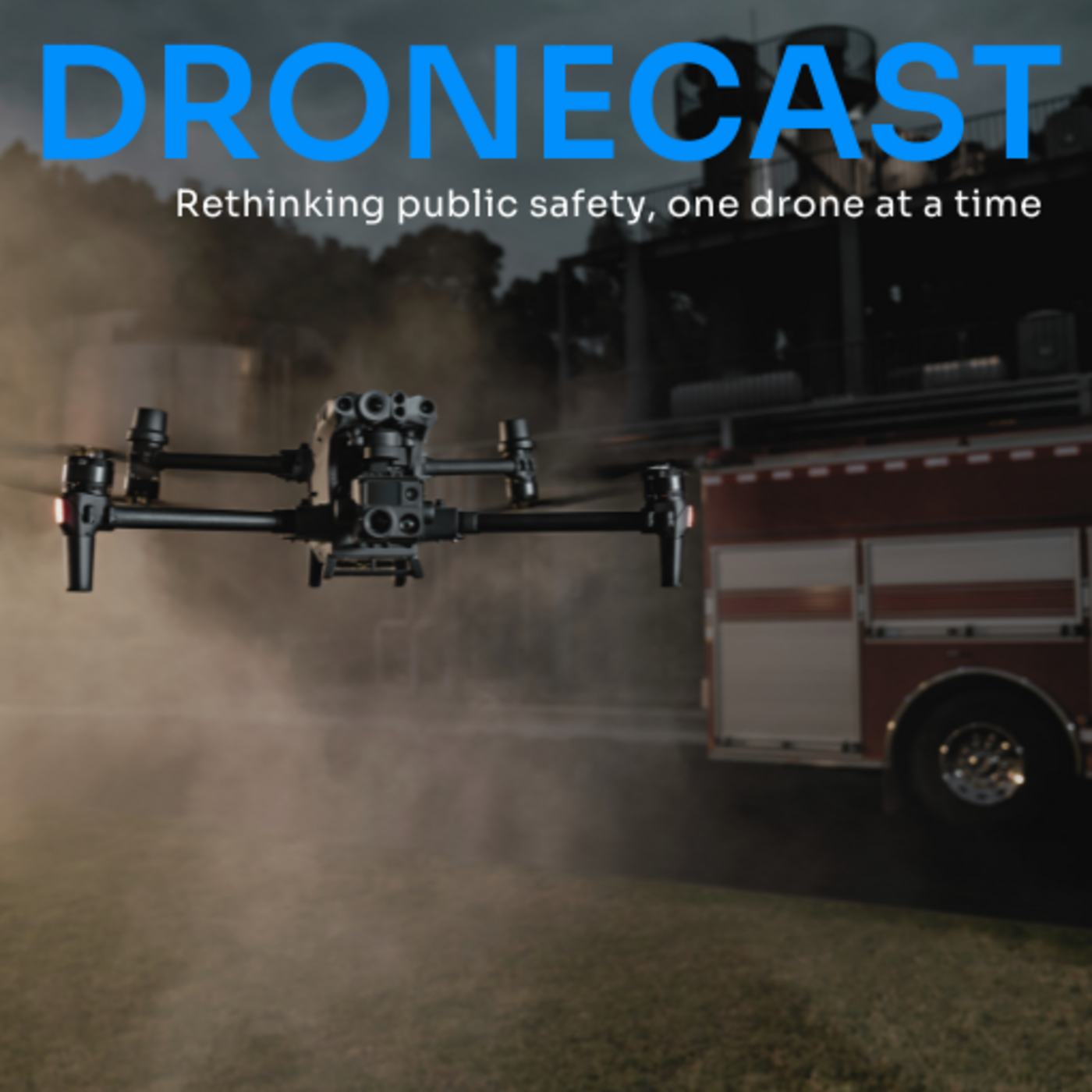Shaping the Future—Legislation, Innovation & Force Multiplication
November 25, 2025

In this release of DroneCast, host Joe Kearns sits down with DJ Smith — recently retired from the Virginia State Police after 31 years of service and now part of Amazon Global’s SPEAR STT organization. A national leader in counter-drone operations, DJ reflects on his decades in technical surveillance and how his expertise continues to shape CUAS innovation and airspace security in the private sector. He discusses the urgent need for smarter drone legislation, the growing threat of unauthorized drone activity, and how innovation continues to safeguard the skies — and those who serve beneath them.
Our host Joe Kearns welcomes DJ Smith, a recently retired 31-years in public safety who served as the Unmanned Aerial CUAS Program Coordinator for the Virginia State Police and now joins Amazon Global’s SPEAR STT organization.
From his early days experimenting with drones to becoming a national leader in counter-drone defense, DJ shares how dedication to safety, education, and innovation drives his mission. He discusses how counter-drone technology is evolving to defend against emerging threats, why legislative reform is vital for local enforcement, and how real-world testing in Virginia — and now his work in the private sector — are setting a new standard for airspace security.
DJ also highlights how collaboration between agencies mirrors the teamwork and discipline found in military service — proving that protecting our homeland extends beyond the battlefield. This episode is a powerful reminder that service takes many forms, and innovation is the next frontier of defense.
What You’ll Learn:
- Why autonomous drones are redefining counter-UAS response
- How budget limitations restrict SLTT access to advanced detection tools
- Why remote ID 2.0 must be rebuilt for real compliance
- The biggest challenges in urban CUAS testing and signal propagation
- How dark drones bypass traditional detection systems
- Why ports are high-risk choke points for drone threats
- The role of drones in wildfire, EMS, and DFR operations
- Best practices for training police and responders on drone incidents
- How education can reduce 95% of drone-related problems
- DJ’s “Day One” vision for national drone safety standards
Helpful Links:
- Fill out the Audience Form here.
- Explore more episodes and insights on the official DroneCast website: https://www.dronesense.com/dronecast
- Ready to launch or enhance your drone program? Get Started with DroneSense today!
- Parrot, ANAFI UKR Tech Sheet: https://5n8jp.share.hsforms.com/2oWfNvmGLRCeKUWcJGtFbBg
Episode Highlights:
- [00:04:21] The “Day One” Framework — Clear Rules Before Advanced Air Mobility - Joe Kearns calls for an 18-month national drone education campaign followed by a firm “Day One” enforcement date. Without clear rules, agencies can’t distinguish mistakes from violations. His model: educate first, enforce second. Virginia already uses this approach with reference cards that apply aircraft registration rules to drones — a foundation needed before scaling advanced air mobility like medical deliveries.
- [00:05:55] Urban Testing Exposes Detection Gaps - Urban environments create signal reflection, absorption, and RF congestion that desert testing fails to reveal. DHS testing showed cities can mask drone signatures entirely. Real effectiveness requires urban-specific sensor placement, altitude tuning, and overlap zones — not desert-based assumptions. Norfolk’s sensor project proves agencies must test in real terrain to reach realistic 70–80% detection accuracy.
- [00:10:42] Hampton Roads: From $1M to $30–50K Per Square Mile - Hampton Roads cut airspace awareness costs from $1M+ to $30–50K per square mile by leveraging military infrastructure and federal partners. This makes scalable detection possible for SLTT agencies with limited budgets. The model also supports future drone services like emergency medical deliveries. Core principle: start small, expand outward, and share data across agencies.
- [00:25:42] Treat Every Drone as Evidence - Kearns advises officers to treat every drone as evidence until proven otherwise. Innocent crashes can hide stalking, espionage, or network intrusion — as seen when a Phantom 4 sniffed banking credentials during a breach attempt. Protocol: 300-ft perimeter, forensic documentation, and use of existing aviation laws for registration and pilot requirements. This evidence chain turns drone incidents into prosecutable cases.
- [00:28:55] Use Existing Aviation Codes for Drone Enforcement - Most states already classify drones as aircraft, meaning registration, licensing, and sobriety rules apply without new laws. This removes ambiguity and improves compliance. Virginia and Georgia now train officers with a card showing pilot-interaction steps and crime-scene protocols grounded in aviation law. Result: consistent enforcement and fewer legal loopholes.
- [00:32:31] Drones as Tactical & SAR Force Multipliers - Virginia’s seven full-time tactical teams use drones on every callout—from meth labs to attic clears—because drones absorb risk officers would face. “I’d rather replace a drone than a trooper.” Drones also cut search-and-rescue time and reduce helicopter conflicts using clear deconfliction policies. The takeaway: drones reduce danger, speed operations, and deliver measurable ROI for public safety leadership.
Episode Resources:
- DJ Smith on LinkedIn
- Joe Kearns on LinkedIn
- Get started with DroneSense
- Parrot, ANAFI UKR Tech Sheet: https://5n8jp.share.hsforms.com/2oWfNvmGLRCeKUWcJGtFbBg
Dronecast: Rethinking Public Safety, One Drone at a Time Podcast is handcrafted by our friends over at: fame.so
Previous Guests include: Matt Rowland, Jason Burnside
Check out our 3 most downloaded episodes:
Previous Guests include: Matt Rowland, Jason Burnside
Check out our 3 most downloaded episodes: